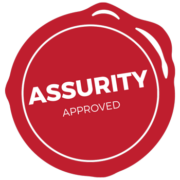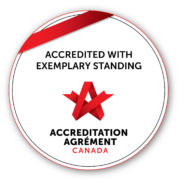Bulletin #9 – Safety Culture – 3

Safety Culture is one of our Accreditation Quality and Safety Themes. It focuses on creating a culture of safety within Menno Place. Within the Safety Culture Theme there are four Required Organizational Practices (ROPs) that must be met to successfully complete Accreditation which will occur October 22 – 25, 2018.
How do we comply with the Safety Culture ROPs?
Menno Place has dedicated resources to adopt and implement a variety of client safety reporting measures including reporting events and disclosing them. Resident safety is embedded in Menno Place’s Strategic Plan. Leaders regularly report to the Board through the Quarterly Incident Risk Management Committee (QIRM) on resident safety concerns and provide recommendations and progress reports on key initiatives that are taking place. Additionally, the Board and leaders review a number of indicators.
ROP 4 Client Safety Quarterly Report (Leadership ROP 15.10)
“The governing body is provided with quarterly reports on patient safety that include recommended actions arising out of patient safety incident analysis, as well as improvements that were made.” (Leadership ROP 15.10)
Surveyor Question: Is the Board provided with quarterly reports on client safety that includes recommended actions arising out of analyses and improvements made?
Answer: The Board receives quarterly reports from Quarterly Incident Risk Management Committee (QIRM) which is comprised of Board Members and Menno Place Leaders.
Evidence: The Board is ultimately accountable for quality and safety of services delivered at Menno Place. It sees its role as both enabling Menno Place to make improvements and thereby enhance client safety. Menno Place is more likely to make safety and quality improvements a priority if the Board is aware of patient safety issues and patient safety incidents and leads MP’s quality improvement efforts. The Board takes seriously its role in reviewing incidents, follow-up actions and improvement initiatives.
Quarterly Reports include:
- Resident/Visitor Compliments and Complaints
- Inspection/Licensing reviews
- Resident and Family Input and Improvements made
- Residential Care Quality Performance Feedback Report (FHA)
- Near Miss Report
- Risk Management/Security/Apartments Resident Safety Report
- Human Resources Report (Sick time, Labour relations etc.)
Other reports that are reviewed include:
- Professional staff credentialing
- Hand Hygiene audits
- Reprocessing audits
- Patent Safety Culture survey results
- Patient Satisfaction survey results
- Influenza Immunization rates
- Outbreak rates
- Infection rates
MP policies:
- Near Miss (AP 2.25)
- Sentinel Events (AP 2.26)
- Resident Visitor Complaint Process (AP 2.01)
How will the ROPs be evaluated?
Surveyors will tour our sites and test compliance for each of the ROPs. Specifically they will gather information by:
- Reviewing client health records
- Talking and listening to leaders, physicians, staff, students, volunteers, residents and families.
- Observations of what is taking place as they tour the sites
- Recording what they see and hear
Who needs to be aware of the Safety Culture ROPs?
Surveyors will meet with teams, physicians, staff, residents, families, students and volunteers so everyone should be aware of the Quality and Safety themes and their associated ROPs and priority practices. If you are asked a questions on an unfamiliar topic, please refer the surveyor to the appropriate individual or supervisor.
What are some of the questions surveyors may ask about Safety Culture?
During the onsite visit, surveyors will ask questions about Menno Place and how they comply with the ROPs and standards. A sample of questions may include the following:
- Do staff feel there is a no-blame culture here?
- Are there open discussions about resident safety issues in each unit/department?
- What can you tell us about the incident reporting system at Menno Place?
- Can you tell me about an improvement initiatives that has occurred in your work area over the past year?
- Have you reported any near miss events? Can you give an example?
- Can you define an adverse event?
Definitions to Remember
According to the Canadian Patient Safety Institute, here are some important definitions to remember in case a surveyor asks you.
Adverse event: An event that results in unintended harm to the client, and is related to the care and/or services provided to the client rather than to the client’s underlying medical condition.
Sentinel Event: An event that leads to death or major and enduring loss of function for a resident of health care services. Major and enduring loss of function refers to sensory, motor, psychological or physiological impairment not present at the time services were sought or begun (e.g. person dies or is seriously harmed by a medication error, suicide, accidental death, homicide etc.)
Near Miss/Close Call: The event did not reach the client because of timely intervention or good fortune.
Disclosure: The process by which an adverse event is communicated to the client/family by healthcare providers.
Initial disclosure: The first communication made with the client/family as soon as reasonably possible after an adverse event, focusing on the known facts and the provision of further clinical care.
Post-analysis disclosure: Subsequent communications with the client/family about known facts related to the reasons for the harm after an appropriate analysis of the adverse event.
Harm: An outcome that negatively affects the client’s health and/or quality of life.
Client safety: The pursuit of the reduction and mitigation of unsafe acts within the healthcare system, as well as the use of best practices shown to lead to optimal client outcomes. The reduction of risk of unnecessary harm associated with healthcare to an acceptable minimum. An acceptable minimum refers to the collective notions of given current knowledge, resources available and the context in which care was delivered weighed against the risk of non-treatment or other treatment.
Reporting: The communication of information about an adverse event or close call by healthcare providers through appropriate channels inside or outside of healthcare organizations for the purpose of reducing the risk of adverse events in the future.
Root cause analysis: An analytic tool that can be used to perform a comprehensive, system-based review of critical incidents. It includes the identification of the root and contributory factors, identification of risk reduction strategies, and development of action plans along with measurement strategies, to evaluate the effectiveness of the plans.
Adapted from: The Canadian Patient Safety Dictionary (Available at: http://rcpsc.medical.org/publications/PatientSafetyDictionary_e.pdf)
Effective Governance for Quality and Patient Safety
Learn More
Between now and September 2018, you will receive information on each of our Quality & Safety Themes, and a series of special bulletins. If you have missed the previous bulletins please access them online – Click Here. Please also review the “Bee” cards that your Supervisor/Manager has shared with you.
Stay Tuned
Our next Quality & Safety theme will be “Worklife – Workforce Theme”. We are steadily moving forward together in our Accreditation Process as we continue to strive to our Vision: “Providing quality care and quality of life in a compassionate Christian environment”.
Stewardship – Excellence – Respect – Values-Driven – Innovation – Compassion – Encouragement




